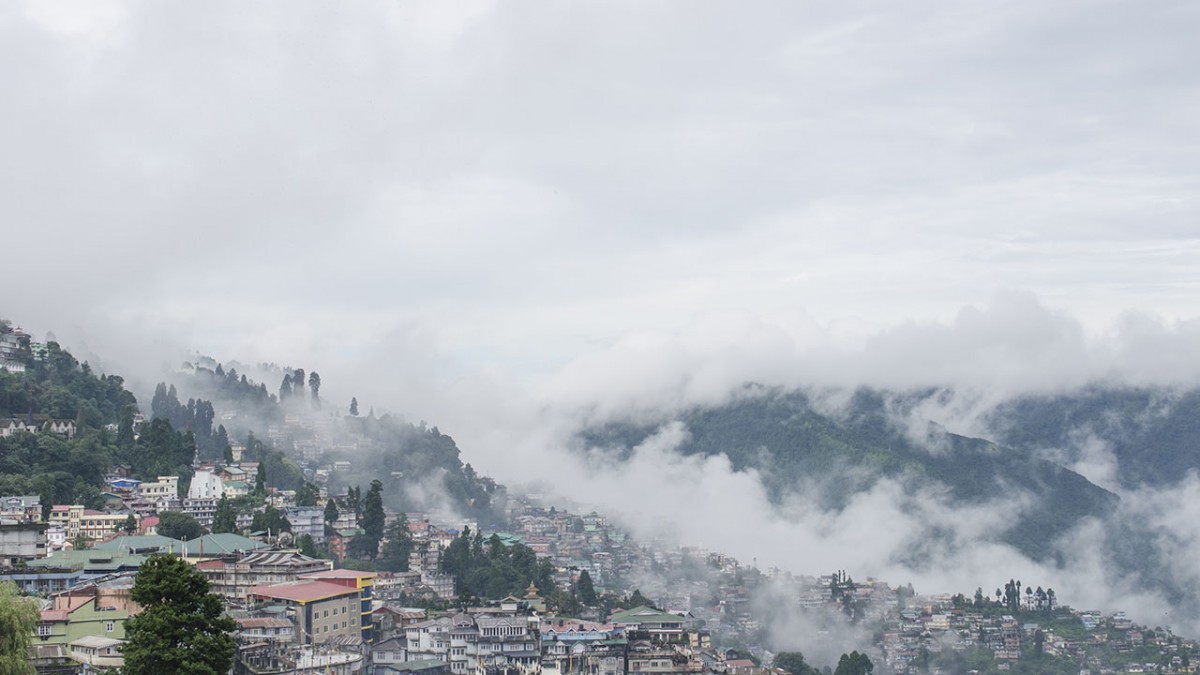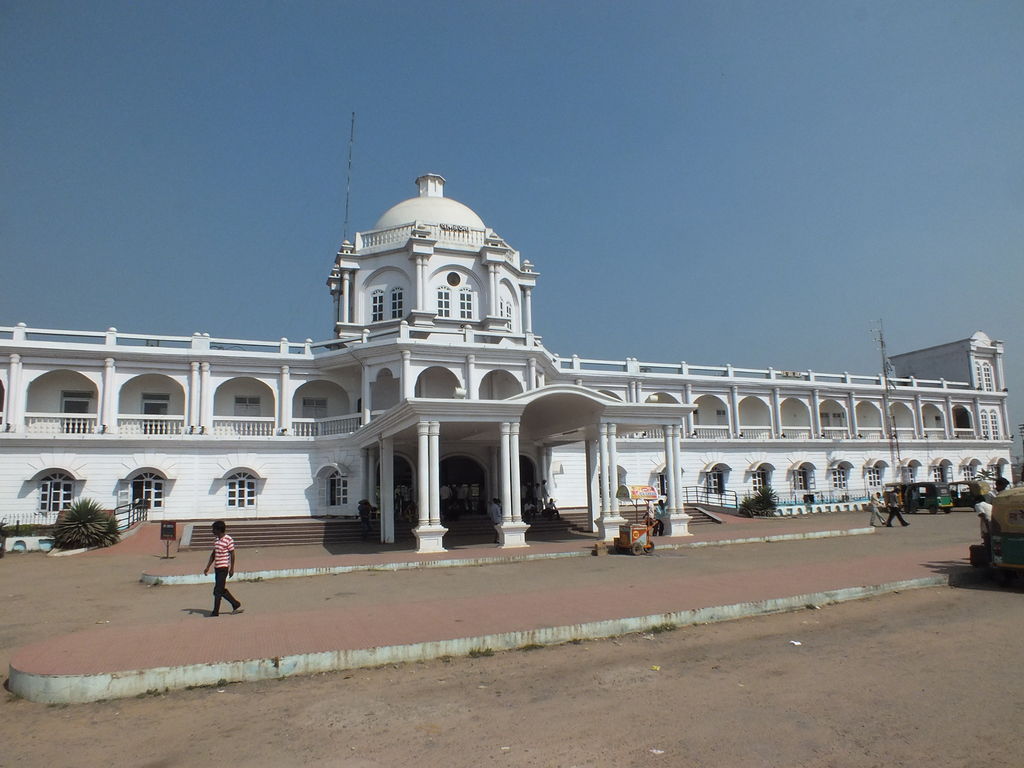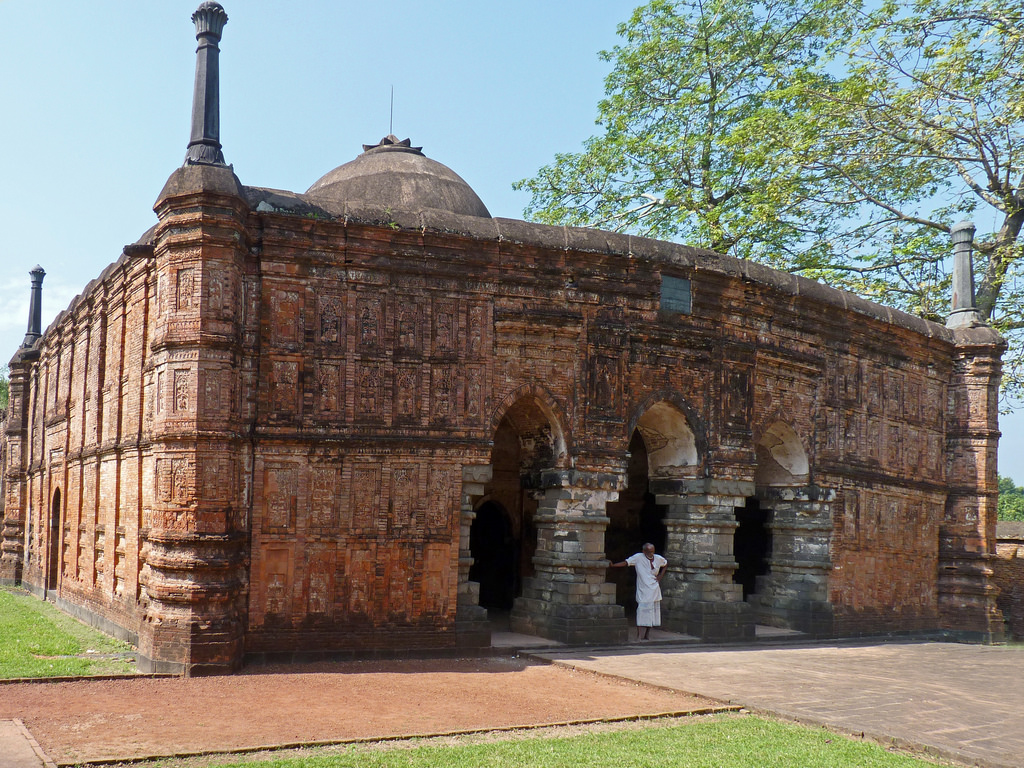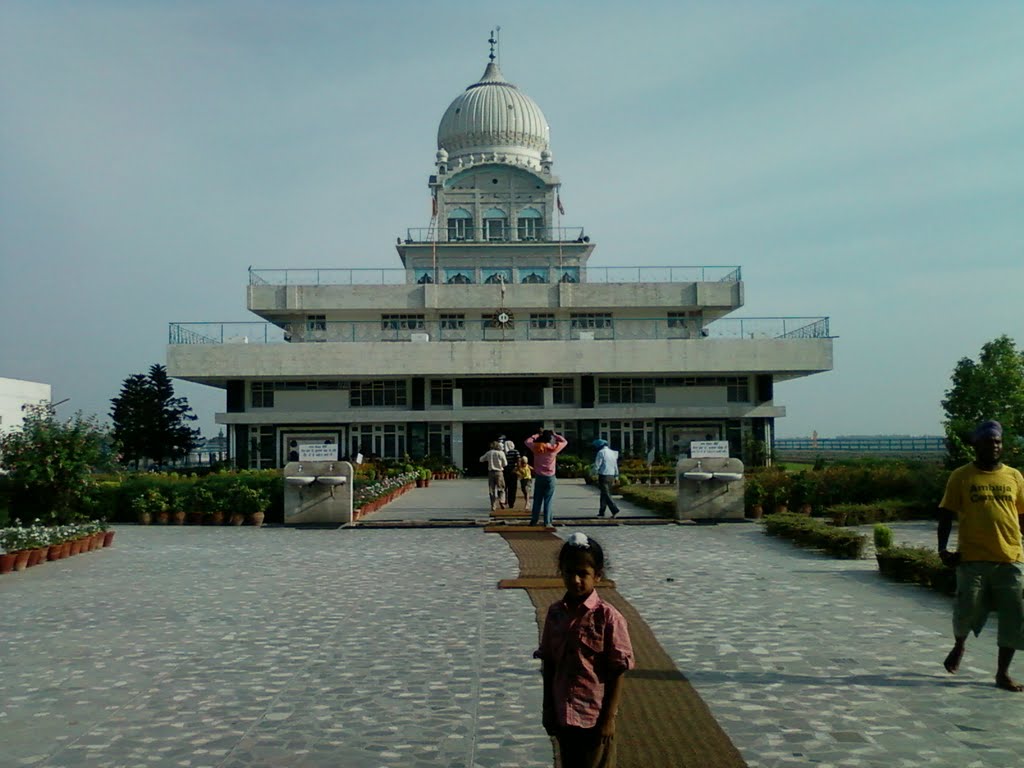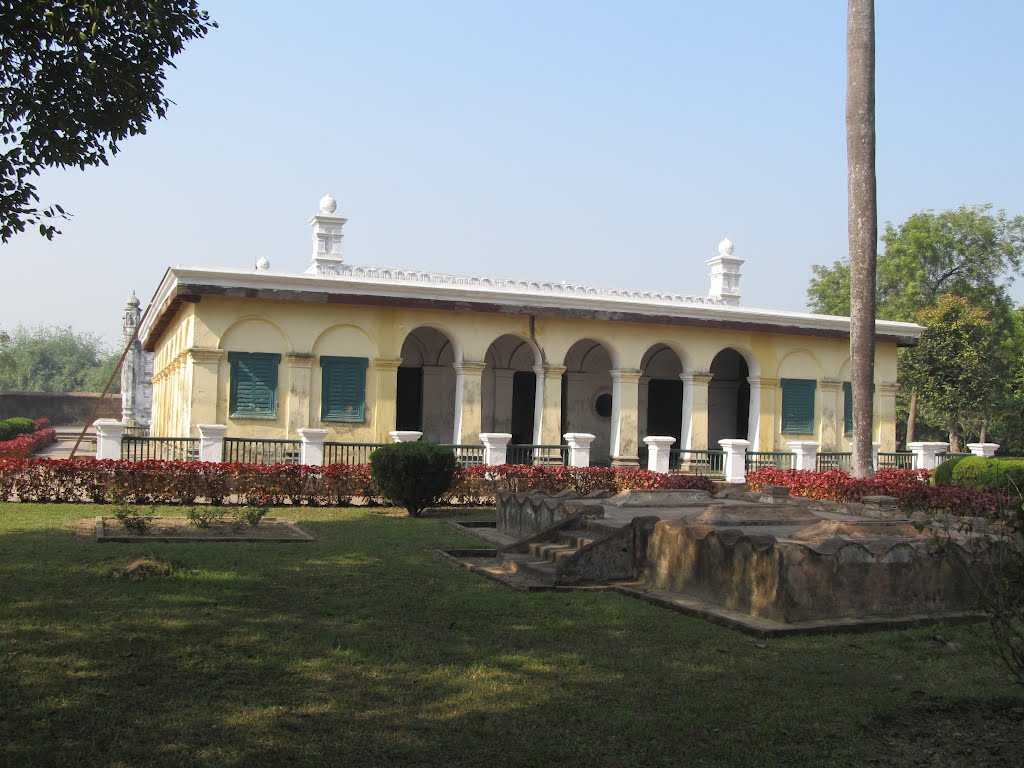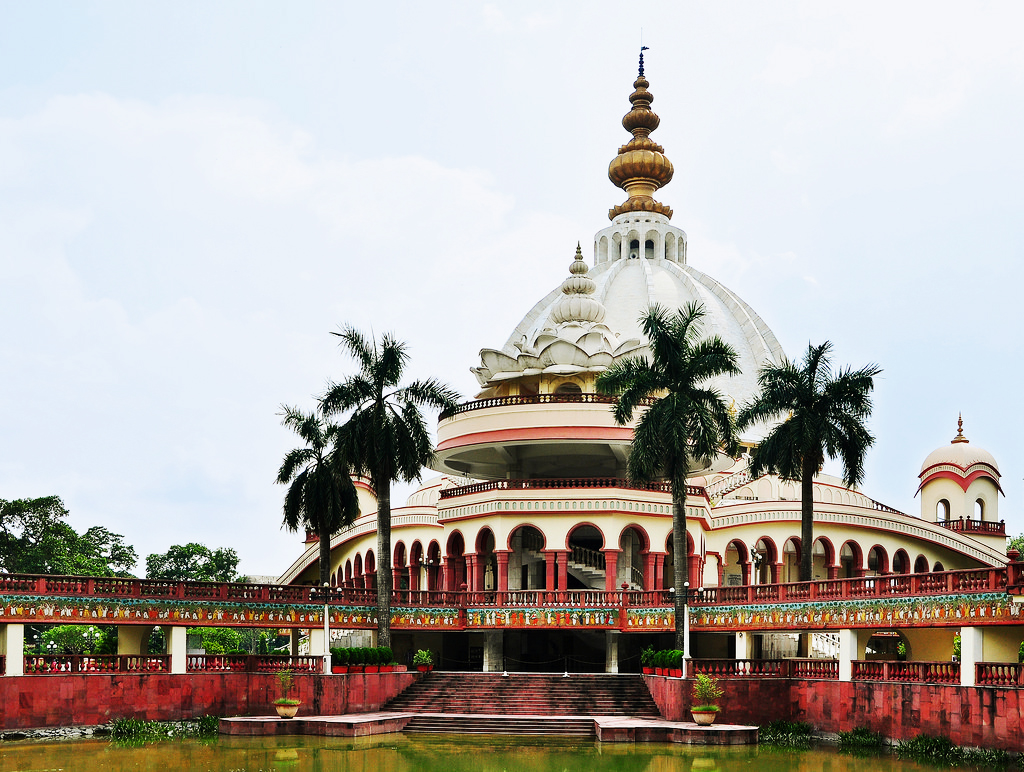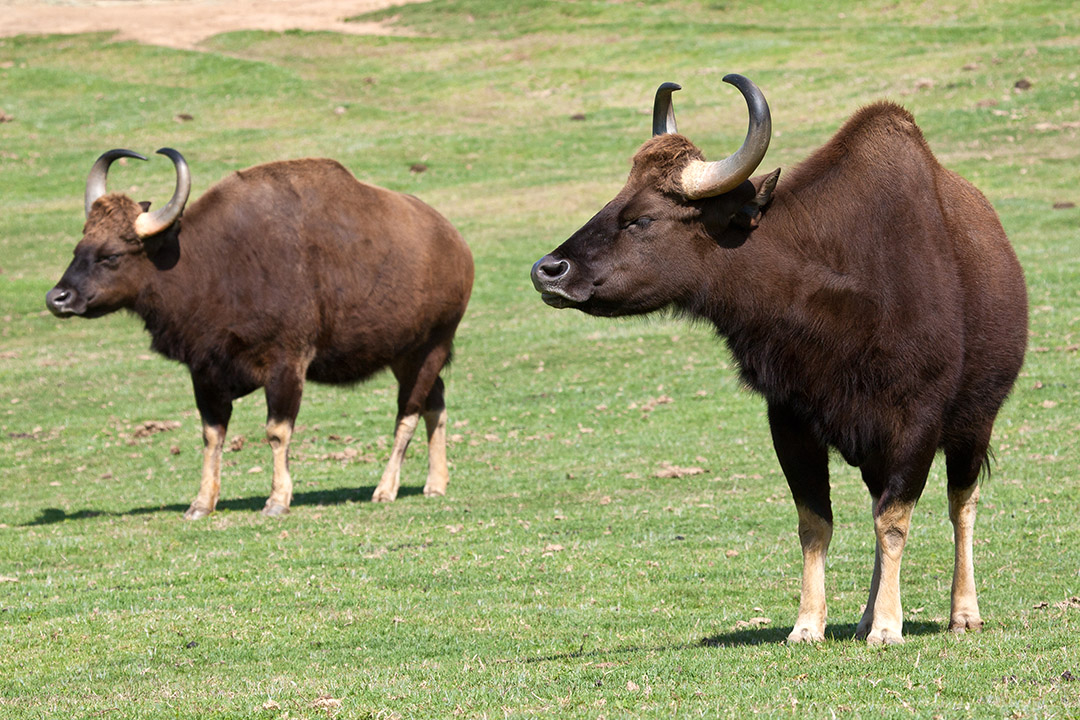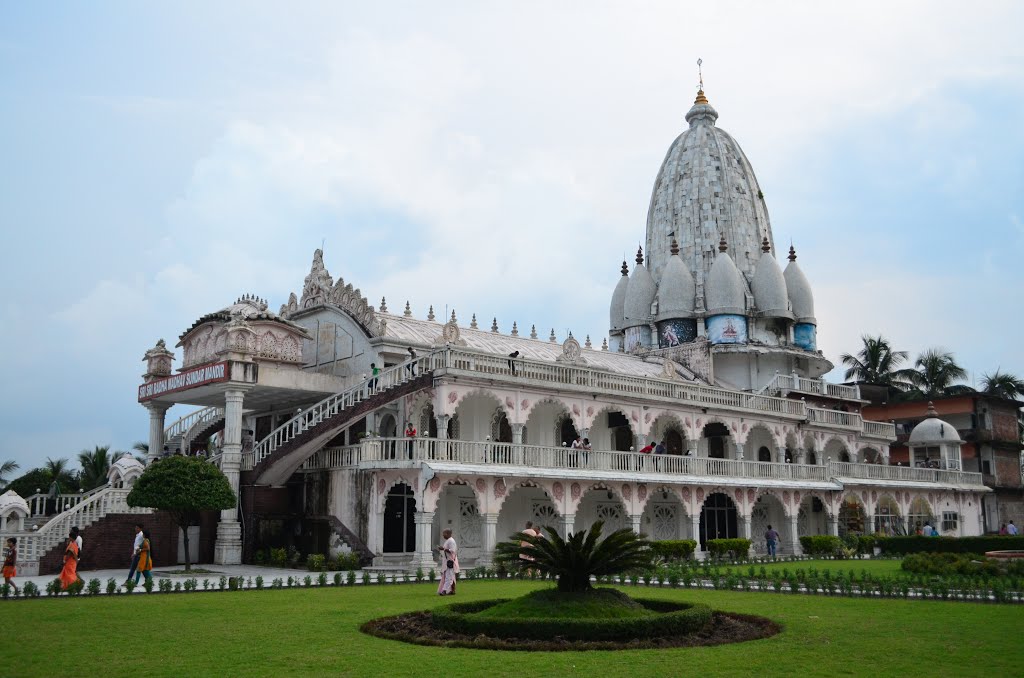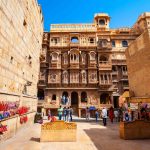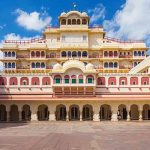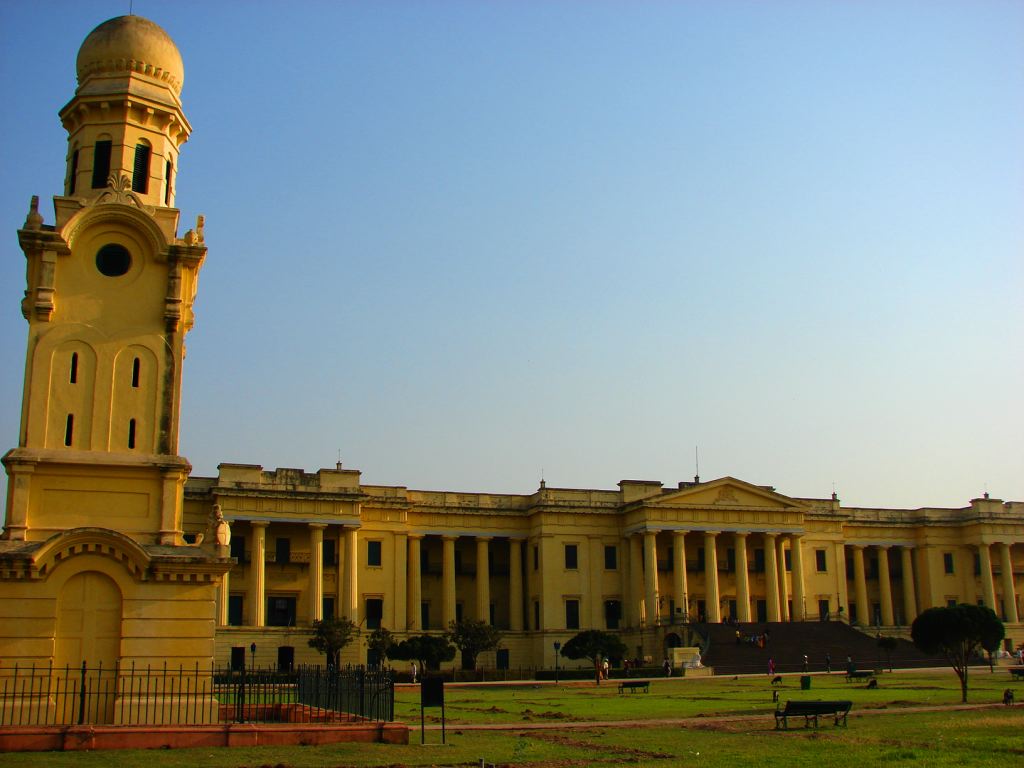
Murshidabad Tourism and Travel Guide
Origins of Jain Migration into Murshidabad: Some of the links are now outdated. Any help with links to the history of Murshidabad in the 17th-20th centuries will be much appreciated. RKD 12/18/98 Murshidabad
Murshidabad, the capital of Bengal after the demise of Mughal rule was founded by Murshid Quli Khan, the nawab of Bengal from 1704 to 1725, in the early 18th. century (dates?). Nawabi rule attracted, among others, bankers and merchants and foremost among them were the Rajasthani bankers who came to Murshidabad seeking new fortunes.
The name of the Jagat Seths is known to every Indian as the one of the most (in) famous names in the recent history of Bengal. Originally, they came to prominence for the vast wealth they accumulated as the Nawab’s banker (the title
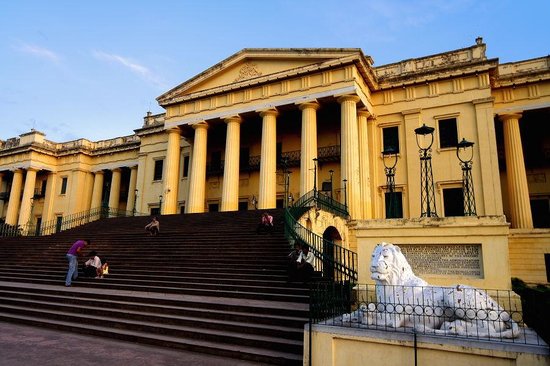
Jagat Seth means Banker to the World). Since Bengal was perhaps the richest subah of the Mughal Empire, this should not be too surprising: in the early 18th. centry, even for a decade or two after Aurangazeb’s death in 1707, the Mughal Empire was still strong, revenues were collected and writ of the Mughal subahdar still meant something. It was only the sack of Delhi by Nadir Shah and and the subsequent sacking of Delhi by the Marathas that led to Mughal power being publicly and irrefutably reduced to a cipher by 1839.
In course of events, Murshid Quli Khan was succeed to the subahdari of Bengal by Shuja Khan (1725-1739) and then by Alivardi Khan (1740-1756) and finally by abysmally incompetent Siraj-ud-Daulah (1756-7). It was during the rule of the latter that matters came to a head with the British and in the climactic showdown, the then Jagat Seth played a pivotal and treacherous role together with Siraj’s maternal uncle Mir Jafar, Umichand and Rai Durlabh in the determining the outcome of the battle of Plassey in 1757. At Plassey, Robert Clive, commanding a troop of 400 riflemen of the East India Company and with half of Siraj’s army commanded by Jafar and Durlabh in his back pocket, Murshidabaddefeated the ill-organized forces of an utterly debauched and degenerate young nawab whose only qualification to govern Bengal was that he was Alivardi Khan’s grandson.
This event is widely accepted as the beginning of the British Indian Empire. The British went on to defeat the Empreror Shah Alam II at Buxar in 1764 and in 1765 the diwani of Bengal passed away to London for the annual sum of Rs 2,600,000 to be paid to Delhi by the East India Company. The traitor Mir Jafar was installed as the Nawab by the British and ruled as such from 1757 to 1760, when he fell out with the British and was taken and killed by Mir Kasim Ali, a relative of Siraj-ud-Daulah.
Treason didn’t pay off for the Jagat Seth himself either. Eventually, he was imprisoned in Monghyr fort by Mir Kasim Ali (1760-1763) who became Nawab after the traitorous Mir Jafar had fallen from British grace. The last of the “Jagat” Seths came to his end when he was rolled off the ramparts of Monghyr Fort into the river. The family of the Jagat Seth were devout Jains and as they had prospered, they had performed many of the traditional Jain acts of piety — culminating in their role as the trustees of the Jain tirtha at Pareshnath (Shikharji tirth), which they kept up till long after Plassey (till the early part of the 19th. century in fact). The

family house and the Jain temple the Jagat Seths built still stand in the village of Nashipur in Murishdabad. They and their community of Jains are known as the Johori Sath as they were orignially jewellers by trade and had gone into banking much later.
Other Jains came to Murshidabad too, drawn by the promise of trade and banking for Murshidabad had become the economic center of Bengal — silk, muslin, ivory, agriculture all promised good trade and good trade prmised good banking opportunities. Several families settled in the twin town of Jiaganj and Azimganj and this became the nucleus of the Murshidabad Jain community or the Murshidabad Sangh. In course of time, banking, trade and jagirs and later,Murshidabad zamindaris acquired under the Permanent Settlement enabled some of these families to become quite prominent in various acts of Jain piety. The five “heads” of this community were the Budh Singh Pratap Singh Dugars, the “Azimganj Raj” Dudhorias, the Nahars, the “Meghraj Mymensingh” Kotharis and the Nowlakhas (PKD?). At its peak, this community numbered about 100 Jain households at most, perhaps fewer (PKD?). The Jains of the twin towns of Jiaganj and Azimganj are known as Sheherwali or the city dwellers and with the gradual economic devastation of Murshidabad during British rule, they have mostly moved to Calcutta but retain very strong connections to Jiaganj and Azimganj.
Murshidabad as a Jain Tirtha Today: Between them, Jiaganj and Azimganj have several temples and the entire area Jiaganj-Azimganj-Nashipur has come to be known as a tirth. Pilgrims usually come by bus from Calcutta and stay at the dharamshala at the Bimalnath Swami Temple in Jiaganj which is the only place in the area which can accomodate any sizable group of travellers. The usual itenarary is one day for Jiaganj and Azimganj Temples and a half day to do the Kathgola Bagan (there is a tiny dadabari and an Adinath Swami Temple (another Picture) in the complex) and the Nashipur Temple. There used to be some rare ratan pratimas in the Azimganj Temple — for security reasons they are no longer on public display and I am told that they are taken out only during the major occasions when most of the Sangh is present. The bhandars of some of these temples are reported to contain quite a collection of old texts as Murshidabad was for a while a center of Jain manuscript collectors (all that money and nothing to spend it on but Baluchari sarees, Jamiwar shawls, an occasional diamond or emerald (or two), what’s a man to do but collect manuscripts and build temples?).
Murshidabad Today, however, spending more than a couple of days in the area is strongly inadvisable: after one has done pujas everywhere, ridden cycle-rickshaws to Kathgola Bagan, Nashipur and to the Hazarduari Complex (the Nawab’s Palace and Mosque are here) and taken a boat ride on the Bhagirathi to visit Rani Bhabani’s lovely terracotta temple complex,
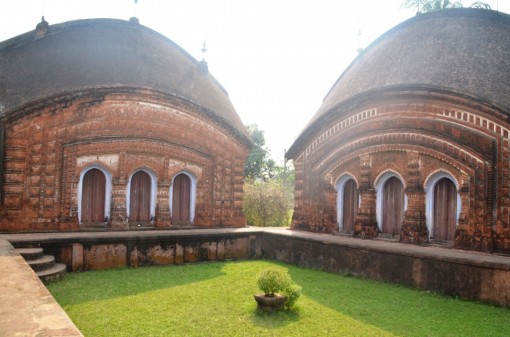
there is nothing left to do. The economic devastation of Bengal over the past 300 years is writ large on every graffiti’d wall, every crumbling mansion and every tottering light pole in these once glorious towns.
Notes:
Siraj was for many years vilified by British propoganda that he had condemned 146 Englishmen to death in the notorious Black Hole of Calcutta — recent historical opinion is that this was fabricated out of whole cloth. In light of this more sober opinion, this story is instructive for it exemplifies how the the British were to systematically dehumanize the “natives” who would then feel grateful for the civilized blessings of British rule. Spin-doctoring false propaganda and utterly shameless hypocrisy are not by any means new phenomena. However he was a drunkard, an opium addict and a womanizer and part of the story behind the collapse of Alivardi Khan’s house is that in his youth Siraj had alienated many of Alivardi’s courtiers with rude, arrgant and generally intemperate behavior. He was also incompetent at organization and a lousy soldier — rahter he seems to have taken as his model not the soldierly gandfather he inherited his seat from but an effete later Mughal courtier whome he resembles in his portrait.
One story is that the Jagat Seths’ made their orignial fortune in the Jade trade — in those days green jade from Burma was highly valued by Mughal courtiers because of the belief that it would shatter or discolour if poisoned food was served on it. Today, the nawab’s personal dishes are on dsiplay in the Hazarduari Palace Museum. Apparently, in one such cargo-load, the family found a large number of shattered pieces of apparently no value — but beingMurshidabad jewellers, they immediately identified the “valueless” shards as extraodrinarily large emeralds of exquisite quality and their fortune was made. Emeralds were highly prized by Mughal rulers and their courtiers and this find made it quite a bit easier for the Jagat Seths to cement their connection to the nawabs far more effectively with appropriate nazarana from time to time.
The original Jagath Seth’s kothi (“strong house”) was cut away by the Bhagirathi (soon after Plassey) and legend has it that collapse of the house revealed the existence of vats with mud coins in them. Apparently, in order to avoid the greedy eyes of the Nawabs who were known to be keenly sensitive to public displays of wealth by their subjects, earlier Jagat Seths had filled these vats with gold and silver coins and then bricked them up in the walls of their house as insurance against the viccisitudes of fortune. The gold and silver are said to have turned to mud as their heirs tried to salvage the remnants of their ancestral wealth while those who were not of the Jagat Seths’ blood and could get their hands on these vats found gold and silver in theirs. BTW, in Murshidabad at least, such legends are common motifs in morality tales of bad (or undeserving or careless or thoughtless) people getting their just desserts in many different contexts. I have heard such tales about buried treasure from other sources too in families other than the Jagat Seth’s, so it is hard to say how much of this is true — however, the old house definitely was washed away by the Bhagirathi — this much is sober fact. Sometimes white sankes or white owls are said to guard buried treasure in old houses and to this day, in many a locked up kuthibaDi in Jiaganj and Azimganj, snakes and owls are left alone, just in case.
Most families still go back several weekends in the year to visit the family temple(s), eat mangoes and just to sit and Murshidabadhear the jhNi-jhi-poka (jhNi-jhi is bengali for whine and poka is bengali for insect) whine away as night descends. As usual the power supply is erratic, so at best one has a faint electric lamp to read by or else one can sit on the roof and hear the artati bells ring and then watch the temple lights go out. After that, the biggest blessing of having no electricity to speak of is that there is no light pollution, one can actually see stars — for Calcuttans that is a rare event. Eventually, at about 10 pm the streets are dead and one just has silence — pure silence that no city in the world can give. Of course web browsing may be a somewhat more complicated enterprise!
One comes back from Jiaganj and Azimganj having had a glimpse of what life must have been in those times: life revolved around the gaddi (the banker’s place of business) which was usually located in the house itself, away from the public rooms as well as the ladies quarters but close to the master bedroom, or around the mukam (traders’ office). At lunchtime, one would invite whoever was in the gaddi to join one for lunch, followed by a short nap and then a couple more hours of transacting business. Then it was time for the evening puja and dinner. That essentially meant walking a couple of hundred feet from the house which was built just far enough away from the temple so that the shadow of the steeple never fell on one’s house. And then there was always the weekend trip to the bagicha or garden house built in a more isolated area where one could let one’s hair down and party.
There was considerable rivalry between the various families in terms of bragging rights over acts of piety so that each tried to do everything else the others did and then go one over. This led various families to build and endow temples across the length and breadth of India, to lead Sanghs (this was good for tourism, good for the Sangha and not incidentally, good for business too — if one was leading a Sangh of a few hundred people, one tended to meet maharajas and other big landlords and rich bankers etc.. so the networking used to be pretty top flight).Murshidabad
Of course, it is obligatory to make sure that one arranges to eat the famous chaNaboDa — a gulab-jamun like sweet but made with pure cottage cheese which gives it a hard burnt exterior and a drippy sweet but never undercooked interior — the trick is to remember the night one arrives in town to leave instructions that they are to be brought fresh every morning from Berhampore, one bites ruins you for life. If there is a sweet that ranks higher thasn chocolate, it must be Berhampore’s cha Nabo Das.
Honestly, unless your roots lie there, once you’ve seen it, you’ve got wonder how on earth this place could even have been compared to London and someone (cite?? — P. Bothra, conversation, Jiaganj, 1982) could report that one could walk from one end of Jiaganj to the other across the rooftops of the great mansions that lay in between! In addition, under a lax district administration the laws are enforced poorly, crime is rampant and of late, smuggling contraband across the bangladesh border seems to be the primary occupation of choice of local youth. All in all this golden, fertile, productive land, once the pride of Bengal (which itself was the jewel in the crown of the Mughal Empire) has been reduced to levels of moral and economic devastation not seen perhaps in its entire history: it stands a a monument to the rapacity and devastation of the East India Company’s rule — its wealth stripped, its industry destroyed, its people ruined by systematic pillage, neglect and indifference and in case you think this is hyperbolic exaggeration check this site out.
How to reach?
By Air: Murshidabad is well linked with Kolkata. The Netaji Subhash Chandra Bose International Airport is nearest to it. Berhampore, the head quarter town of Murshidabad is just 195 kms from Kolkata. Regular bus and taxi services are available.
By Rail: Berhampore Court is the main station connected with Sealdah Station at Kolkata. The Bhagirathi Express & the Lalgola Passenger from the Sealdah Railway Station reach Berhampore Court Railway Station covering 197 km in 5 to 6 hours. Khagraghat is another nearby station connected by Howrah-Malda Jan Shatabdi Express.
By Road: Buses ply frequently from Kolkata to Berhampore. All North Bengal going buses take a halt at Berhampore.

